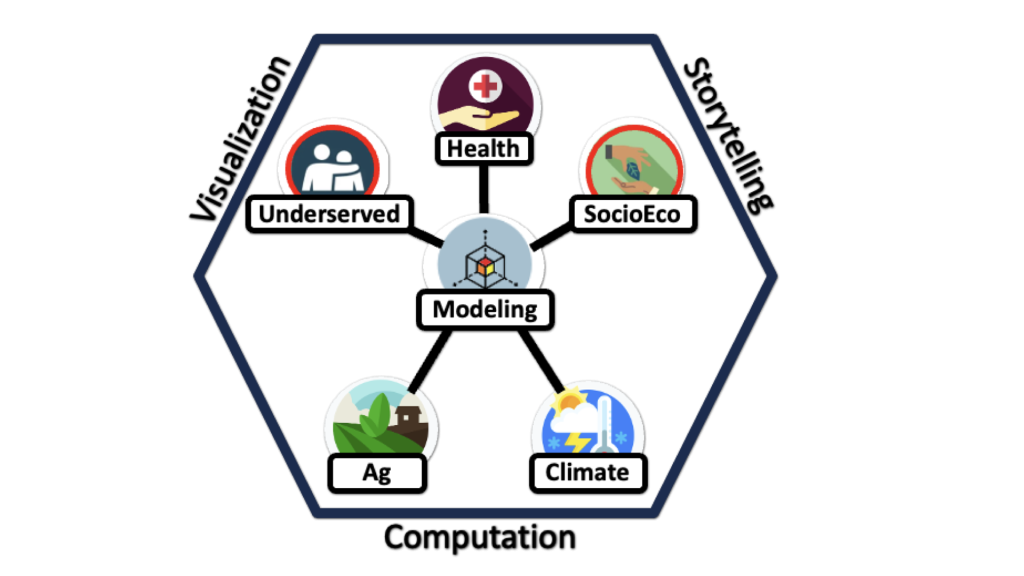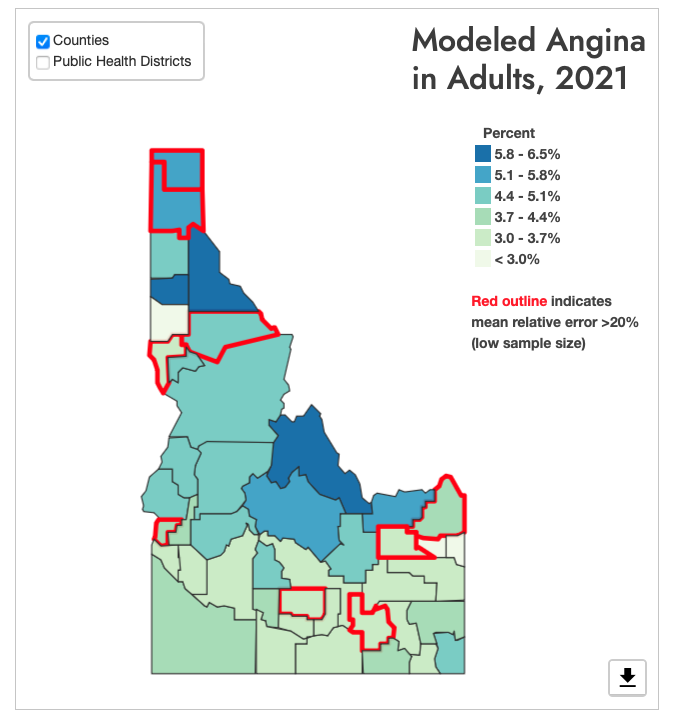Our research efforts focus on individual hypotheses around human and animal health, agricultural processes, and climate change. In addition, some of our work intersects these areas, where we construct more transdisciplinary methodologies. The connecting factor to all these areas is the use of machine learning and spatiotemporal modeling to understand variations and influences across space and/or time. Below are more specifics on each of the areas of focus.
If you interested in our research efforts, and would like to participate, please use the button below to send us an informational request, and we will respond as soon as possible.

HEALTH
Our health associated research relates to social determinants of health and their spatiotemporal variation, as well as modeling efforts to understand child development outcomes. In both areas, we apply machine learning and related spatiotemporal algorithms to explore feature space, as well well as to predict related outcomes.
Health Equity Modeling – Behavioral Risk Factor Surveillance System (BRFSS)
Often times, public health interventions and evaluations lack scientifically sound baseline data due to sampling methods and sparsely populated counties. One standard solution is to collapse several years of data to reach a direct measure. This method does not allow, however, for rigorous evaluation of intervention impacts. Our modeling approach focuses on combining sparsely collected health data and developing modeling techniques which allow us to temporally and spatially refine this data. We then use the resultant data in additional machine learning models, which focus on more complex health-related issues, which may be associated with other areas, including: economics, the environment, social outcomes, and food security. Our work provides regional and state public health agencies, as well as other health organizations, with baseline county level data never available before. These county level data can aid policy leaders, funders, researchers and public health decision makers in their efforts to assess, improve, and monitor health across the United States. Our BRFSS modeling work uses population synthesis and microsimulation techniques to estimate health indicators at a county level. Our recent focus has been on applications to data for the state of Idaho – but our ongoing research is exploring alternative regions, additional health indicators, and differing techniques (geographically weighted regression, simulated annealing) to improve performance. Our work on this effort can be viewed at https://modelingidahohealth.org. Current BRFSS projects include:

- BRFSS modeling for the State of Idaho: in 2019, we developed an iterative proportional fitting (ipf) modeling approach to downscale health district level data (obesity, overweight, diabetes) to a county level, for the state of Idaho. See our Fall 2021 presentation to the state of Idaho. We additionally have a 2023 paper on our work: “Estimating county level health indicators using spatial microsimulation” in Population, Space, and Place.
- BRFSS COVID-19 health disparities microsimulation: Expanding on our previous work, this project uses spatial microsimulation/iterative proportional fitting to estimate a wide range of health parameters that are associated with COVID-19. Results of this project can be found at our https://modelingidahohealth.org site.
- BRFSS Modeling and COVID-19 Indicators Modeling: Our BRFSS COVID indicators project, which starts in 2022, expands upon our microsimulation of BRFSS data to construct COVID-19 indicators which can then be used to model and predict COVID-19 fatality rates, deaths, and cases.
- Idaho Tobacco Modeling: Our team has a multi-year project, funded by the state of Idaho, to examine tobacco usage using 2021 BRFSS data.
Health – Child Development Modeling
- Modeling EEG outcomes in association with child development. In conjunction with research conducted by Dr. Masha Gartstein @ Washington State University, we are constructing machine learning models which parse out behavioral mechanisms in association with EEG signals. We have a PLoS ONE paper from 2022 on this topic.
Health – COVID-19 Modeling
The University of Idaho’s Pandemic Modeling Group is a loose team of researchers engaged in differing aspects of COVID-19 modeling and analysis. Our pandemic modeling website has updated national data on cases and deaths, as well as a rudimentary risk calculation, at a county level. As part of this work, the HAC lab members is engaged in several lines of research:
- Examining aspects of trust and risk in regards to COVID-19 deaths. Utilizing a multi-state survey of COVID-19 perceptions (from 2021) we have constructed a structural equation modeling (SEM) methodology to explore the effects of latent risk and trust variables, and their effects on deaths. We have a PLoS ONE paper from 2022 on this topic.
- Using elastic net regression to examine socidemographic factors related to COVID-19 – published 2024 in PLoS One https://doi.org/10.1371/journal.pone.0297065
- Modeling spatial relationships of covariates in relationship to COVID-19 deaths: We are currently engaged in research to spatially model demographic and comorbidities in relationship to deaths – using geographically weighted random forest approaches. We have a paper under review at BMC Public Health: https://doi.org/10.1101/2023.07.21.23292785
AGRICULTURE
Our agricultural research has close ties to climatological analysis, and is primarily focused on regions of the Pacific Northwest (PNW).
- Climatic random forest modeling of agricultural insurance loss. This research looks at relationships of climate on insurance loss filings, across the Inland Pacific Northwest (iPNW). We currently have a 2022 paper in Environmental Data Science that addresses this subject.
- Exploration of climate effects on aphids in the PNW. In collaboration with researchers in the University of Idaho’s College of Agricultural Sciences, this work models associations of climate with aphid diversity across multiple years. We have a 2022 paper in the Journal of Economic Entomology that discusses this research.
CLIMATE
- The University of Idaho’s ICREWS project (https://idahocrews.org) is a $24 million NSF EPSCoR research project that aims to address the impact of climate, population, and technological change on energy-water (E-W) systems. HACLab team member are working to develop alternative scenario spatiotemporal visualizations.
- Where We Live (https://wherewelive.org) is a 5 year EPSCoR Track 2 project (co-PI Seamon) is an interdisciplinary and cross-jurisdictional collaboration intended to change the way people tackle adaptation to climate-induced changes. Funded by the National Science Foundation, the project addresses climate resilience and sustainability, particularly in rural, underserved communities at high risk from climate-induced change. Using analytical social science and other computational tools, this project aims to advance our understanding of the factors, patterns, and mechanisms of resilience to climate-induced changes — with the goal of discovering how adaptation actions can produce community-scale resilience.
INTERDISCIPLINARY (HEALTH/AG/CLIMATE):
- Environmental factors associated with Asthma and COPD: Using available information on asthma and copd hospitalizations, were are exploring methods to understand spatial and temporal variations in health outcomes, with a particular interest in environmental impacts – such as air quality. The focus of this work is currently for the state of Idaho.
